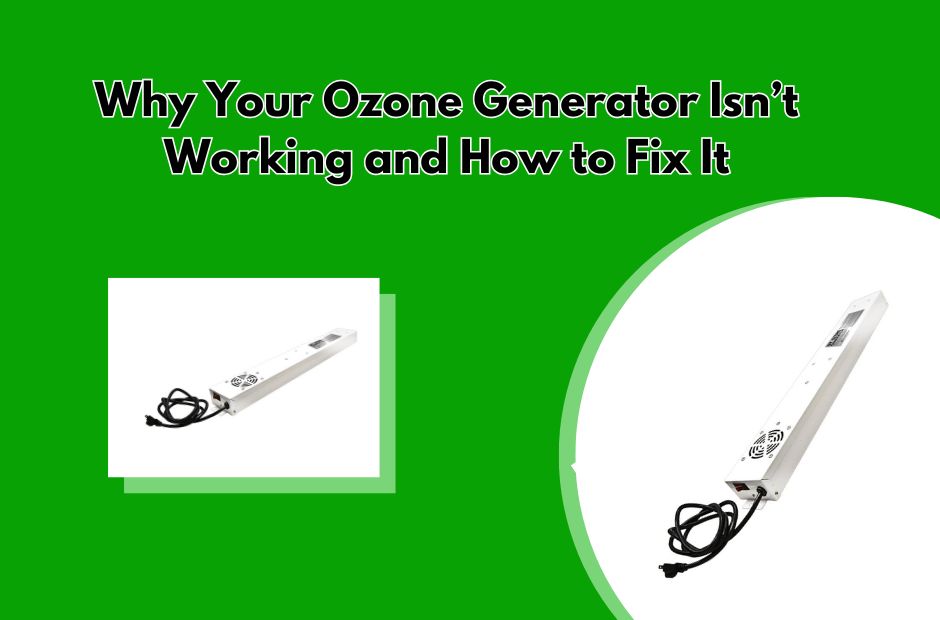
Ozone generators are vital for maintaining clean and healthy hydroponic or pool systems. Water quality can deteriorate when it malfunctions, leading to algae growth or poor system efficiency. This guide highlights common issues with ozone generators, their possible causes, and how to resolve them effectively.
Common Reasons Your Ozone Generator Isn’t Working
Issues like electrical faults, worn components, or moisture buildup can reduce ozone production. Identifying these problems early helps maintain system efficiency.
- Electrical Problems
Loose wiring, blown fuses, or power supply interruptions can disrupt the functionality of your ozone generator.
Solution: Inspect the power connections and replace any damaged fuses. Ensure the unit is plugged into a properly functioning power source.
- Worn-Out Components
Ozone plates and UV bulbs degrade over time, reducing ozone production.
Solution: Regularly replace worn components according to the manufacturer’s recommendations to maintain optimal performance.
- Insufficient Airflow
Clogged air filters or faulty air pumps can limit the generator’s ability to produce ozone.
Solution: Clean or replace air filters and ensure the air pump is operating correctly.
- Moisture Buildup
Excessive moisture in the generator’s system can hinder ozone production.
Solution: Use a moisture trap or air dryer to remove humidity from the system.
- Inadequate Maintenance
Neglecting routine cleaning and inspections can lead to dirt accumulation and reduced efficiency.
Solution: Schedule regular maintenance to clean the unit and check for any wear or damage.
Step-by-Step Guide to Troubleshoot Your Ozone Generator
Inspect the power supply, clean air filters, and check for damaged parts to resolve issues. Follow a systematic approach to restore your ozone generator’s performance.
- Check the Power Supply: Ensure the unit is receiving consistent electrical power and inspect for blown fuses.
- Inspect Internal Components: Open the unit to check for any damaged wires, burnt ozone plates, or expired bulbs.
- Clean Air Filters: Remove and clean the air filters to improve airflow. Replace if necessary.
- Test Air Pumps: Verify that the air pump is functioning correctly by checking the air output pressure.
- Remove Moisture: Install a moisture trap or replace it if it’s already present but not effective.
- Run a Performance Test: Once all issues are addressed, turn on the unit and observe its operation.
Preventative Tips for Long-Term Performance
Schedule regular maintenance and replace components like ozone plates and UV bulbs as needed. Use moisture traps and clean air filters to prolong the unit’s lifespan.
- Regular Cleaning: Clean air filters, ozone plates, and housing to prevent dirt buildup.
- Timely Replacements: Replace UV bulbs and ozone plates as per manufacturer guidelines.
- Moisture Management: Keep the system dry with moisture traps or air dryers.
- System Inspections: Periodically inspect all connections and components for wear or damage.
An ozone generator is a critical component for maintaining water quality in hydroponics and pools. You can restore your generator’s performance by addressing common issues like electrical faults, airflow problems, or worn-out parts. Regular maintenance and timely repairs will ensure your system remains efficient and effective.






